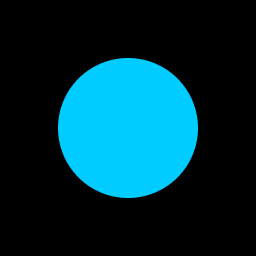【文章推荐】行为设计vs社交媒体vs成瘾行为
最近看到一篇2016年发表在经济学人上的文章,很有启发,把行为设计、行为改变、成瘾行为以及相关心理学原理和应用融合起来,对于我们重新认识社交媒体、理解产品的设计思维和审视自己的习惯帮助很大,简略翻译如下,有些地方英文表达更准确就保留了原文表达,英文好的读者可直接到文末点击相应链接阅读。
标题:The scientists who make apps addictive
(Oct 20th 2016 By Ian Leslie)
前言:
硅谷最成功的科技公司利用行为设计的洞察力为我们注入多巴胺,让我们继续使用他们的产品。但是,正如伊恩·莱斯利(Ian Leslie)所了解到的,一些发展了说服科学的心理学家对它的使用方式感到担忧。
正文:
1930年,哈佛大学一位名叫B.F.斯金纳的心理学家做了一个盒子,把一只饥饿的老鼠放了进去。这个盒子的一侧有一个杠杆。当老鼠四处走动时,它会意外地撞到杠杆,当它这样做的时候,一个食物颗粒就会掉进盒子里。在一只老鼠被放进盒子里几次后,它学会了直接走到杠杆上并按下它:奖励强化了这种行为。斯金纳提出,同样的原则也适用于任何“操作者”,无论是老鼠还是人。他称他的装置为“操作性调节室”。它后来被称为斯金纳盒子。
斯金纳是行为主义心理学学派最著名的倡导者,该学派的前提是人类行为最好被理解为激励和奖励的作用。行为主义者说,让我们不要被那些模糊的、不可能观察到的思想和感觉的东西分散注意力,而只关注操作者的环境如何塑造它所做的事情。理解了盒子,你就理解了行为。设计正确的盒子,你就可以控制行为。
斯金纳是最后一个纯粹的行为主义者。从20世纪50年代末开始,新一代的学者将心理学领域重新引向内部心理过程,比如记忆和情感。但行为主义从未完全消失,近年来,它以一种新的形式重新出现,作为一种应用学科,被企业和政府用来影响你每天所做的选择:你买什么,你与谁交谈,你在工作中做什么。它的从业者特别感兴趣的是数字界面——我们今天大部分时间都在其中度过的盒子——如何影响人类的决定。这门年轻学科的名字叫“行为设计”。它的创始人是B.J.福格。
我以前从未使用过Uber,因为我觉得世界上没有比这更好的地方了,所以一天早上,我在星巴克(Starbucks)打开了Uber应用,叫了一位司机带我去斯坦福大学(Stanford)的校园。不到两分钟,我叫的车停了下来,一位来自奥克兰的工程系学生把我送到了目的地。我不用付钱。感觉很神奇。来自美国、巴西和日本的大约20名高管参加了此次研讨会,他们负责将行为设计的秘密带给雇主。
福格今年53岁。他带着两个可爱的玩具到处旅行,一只青蛙和一只猴子,他在一天开始的时候把它们放在房间里。福格用玩具木琴发出休息或集体练习结束的信号。他身材高大,精力充沛,和蔼可亲,经常用“真棒”、“太棒了”(“awesome” and “amazing”)等活泼的感叹词来打断他的演讲。作为一个英国人,一开始我觉得这种热情有点令人不安,但过了一段时间后,我学会了欣赏它,就像搬到加州的欧洲人最终不再错过季节,而是沉迷于阳光一样。此外,福格很讨人喜欢。他的露齿笑容和鼻音使他成为一个可爱的书呆子。
在研讨会之前的一次电话交谈中,福格告诉我,他在攻读人文学科硕士学位的过程中阅读了古典文学。他从未在柏拉图身上发现什么,但强烈认同亚里士多德对世界进行组织和分类的动力,以看到混乱现象背后的系统和模式。他说当他读亚里士多德的《修辞学》(Aristotle’s “Rhetoric”)时,一篇关于说服艺术的论文,“我突然想到,哦,天哪,这些东西总有一天会在科技领域推出!”(“It just struck me, oh my gosh, this stuff is going to be rolled out in tech one day!”)
1997年,在他作为博士生的最后一年,福格在亚特兰大的一次会议上发言,主题是如何使用计算机来影响其用户的行为。他指出,“互动技术”(“interactive technologies”)不再只是工作工具,而是已经成为人们日常生活的一部分:用于理财、学习和保持健康。然而,技术人员仍然专注于他们正在制造的机器,而不是使用这些机器的人。福格问道,如果我们能设计出教育软件,说服学生学习更长的时间,或者设计出财务管理程序,鼓励用户存更多的钱,那会怎么样?他认为,回答这些问题需要应用心理学的见解。
福格展示了他在斯坦福大学进行的一项简单实验的结果,该实验表明,如果人们在一台他们认为以前对他们有帮助的电脑上工作,他们在一项任务上花费的时间会更长。换句话说,他们与机器的互动遵循了心理学家在社会生活中发现的“互惠规则”(“rule of reciprocity”)。福格说,这个实验意义重大,与其说是因为它的具体发现,不如说是因为它所暗示的:可以利用心理学规则系统地设计计算机应用程序,以便让人们做他们本来可能不会做的事情。在这篇论文中,他补充了一个限制条件:“这种劝说究竟在何时何地是有益的、合乎道德的,应该成为进一步研究和辩论的主题。”
福格呼吁在计算机科学和心理学的交叉点上建立一个新的领域,并为其提出了一个名称:“Captology”(Computers as Persuasive Technologies)。后来,Captology变成了行为设计(Behavior Design),现在已经嵌入到我们日常生活的无形操作系统中。诱使你立即购买的电子邮件,吸引你注意力的应用程序和游戏,促使你做出一个决定而不是另一个决定的在线表格:所有这些都是为了破解人类大脑并利用其本能、怪癖和缺陷(instincts, quirks and flaws)。他们使用的技术通常是粗糙的和公然操纵的(crude and blatantly manipulative),但它们正在稳步变得更加精致(more refined),而且在这样做的同时,也变得不那么引人注目。
福格在亚特兰大的演讲激起了听众的强烈反应,分为两组:要么“这是危险的。这就像给人们制造原子弹的工具一样。”(“This is dangerous. It’s like giving people the tools to construct an atomic bomb”)或者“这太神奇了。它可能价值数十亿美元。”(“This is amazing. It could be worth billions of dollars.”)
事实证明,第二类人无疑是正确的。福格被称为“百万富翁制造者”。许多硅谷企业家和工程师都通过了他在斯坦福大学的实验室,其中一些人已经变得富有。
福格本人并没有从他的见解中赚到数百万美元。他留在斯坦福大学,现在几乎不做商业工作。他越来越担心,那些告诉他他的想法是危险的人,可能已经发现了一些东西。
在研讨会上,福格解释了他的行为改变理论的组成部分。为某人做某事-无论是买车,检查电子邮件,或者做20个俯卧撑——三件事必须同时进行。(three things must happen at once.)这个人必须想要做,他们必须能够做,并且他们必须被提示去做。(The person must want to do it, they must be able to, and they must be prompted to do it.)触发器——行动的提示——只有当人的积极性很高,或者任务很容易时才有效。如果任务艰巨,人们最终会感到沮丧;如果他们没有动力,他们就会生气。(A trigger – the prompt for the action – is effective only when the person is highly motivated, or the task is very easy. If the task is hard, people end up frustrated; if they’re not motivated, they get annoyed.)
福格现在的一个学生告诉我,他正在帮助修改一个语言治疗项目的原型。在与用户交谈时,他发现父母,那些真正想让它工作的人,发现它很难操作——他们很沮丧(frustrated)。他们的孩子发现它很容易使用,但并不为此感到烦恼——他们只是感到烦恼(annoyed)。应用福格的框架有助于确定前进的方向。如果这个程序使用起来更简单,家长们就会克服行动路线。孩子们感觉像是一场游戏而不是一堂课。
福格说,挫折通常比烦恼更容易解决。(Frustration, says Fogg, is usually more fixable than annoyance.)当我们想让人们做某件事时,我们的第一直觉通常是试图增加他们的动机——说服他们。有时这是可行的,但最好的方法往往是让行为变得更容易。福格的格言之一是,“你不能让人们做他们不想做的事。”(One of Fogg’s maxims is, “You can’t get people to do something they don’t want to do.”)一个想让人们投票给她的政客发表演讲或上电视,而不是派一辆公共汽车把选民从家里接回来。银行宣传其活期账户的质量,而不是减少开户所需的点击次数。
当你在Netflix上看完一集《纸牌屋》(“House of Cards”)时,下一集会自动播放,除非你让它停下来。你的积极性很高(Your motivation is high),因为最后一集让你急切地想知道会发生什么,你在精神上沉浸在节目的世界里。难度降为零。实际上,小于零:停下来比继续下去更难。(The level of difficulty is reduced to zero. Actually, less than zero: it is harder to stop than to carry on.)基于同样的原则,英国政府现在“推动”(“nudges”)人们加入工作场所养老金计划,使其成为默认选项,而不是将其作为一种选择。
当动机足够高,或者一项任务足够简单时,人们就会对手机的震动、Facebook的红点(Red Dot)、时装店限时提供连体裤的电子邮件等触发因素做出反应。触发器,如果它设计得很好(或“热”)(The trigger, if it is well designed (or “hot”)),就会在你最渴望采取行动的时候找到你。福格说,行为设计中最重要的九个字是:“在激励人们的道路上放置热触发器。”(“Put hot triggers in the path of motivated people.”)
如果你被触发去做你不喜欢的事情,你可能不会回来,但如果你喜欢它,你会不假思索地反复回来。在我第一次使用Uber之后,我从来没有想过以其他方式在帕洛阿尔托四处走动。福格说,这就是品牌应该为习惯而设计的方式。一个人在第一次使用某样东西时感受到的情感冲动越直接、越强烈,他们就越有可能自动做出选择。(The more immediate and intense a rush of emotion a person feels the first time they use something, the more likely they are to make it an automatic choice.)这就是为什么航空公司在你坐进商务舱座位的那一刻就会给你一杯香槟,也是为什么苹果公司会非常小心地确保客户第一次接触新手机时感觉很神奇。
这种提前交付的多巴胺将用户与产品联系在一起。想想Instagram让你在照片上尝试12种不同滤镜的方式,福格说。一定,有一个功能上的好处:用户可以控制他们的图像。但真正的交易是感性的:甚至在你发布任何东西之前,你就会觉得自己像个艺术家。因此,福格的另一个原则是:“让人们感到成功”,或者换个说法,“给他们超能力!”(Hence another of Fogg’s principles: “Make people feel successful” or, to rephrase it, “Give them superpowers!”)
福格从Instagram的例子中获得了矛盾的满足感,因为他觉得自己对此负有责任,也许还有罪恶感。2006年,福格班上的两名学生合作完成了一个名为“送出阳光”(Send the Sunshine)的项目。他们的见解是,有一天手机(这是前智能手机时代)(the pre-smartphone era)将被用来传递情感:如果你的朋友在一个天气不好的地方,而你站在阳光下,你的手机可以提示你拍一张照片并发送给他们,让他们高兴起来。其中一名学生迈克·克里格(Mike Krieger)后来与他人共同创建了Instagram,现在有超过4亿用户分享日出、日落和自拍。
福格在社交媒体征服世界之前的几年里建立了他的理论。Facebook、Instagram和其他公司将行为设计提升到了他难以想象的复杂程度。社交媒体应用是我们最深的动力源泉之一。人类大脑会对社交互动做出反应,释放出令人愉悦的、形成习惯的化学物质,甚至仅仅是它们的拟像,而最热门的触发器是其他人:你和你的朋友或追随者不断地促使彼此更长时间地使用服务。(Social-media apps plumb one of our deepest wells of motivation. The human brain releases pleasurable, habit-forming chemicals in response to social interactions, even to mere simulacra of them, and the hottest triggers are other people: you and your friends or followers are constantly prompting each other to use the service for longer.)
福格向我介绍了他以前的一名学生诺埃尔·莫斯利(Noelle Moseley),她现在为科技公司提供咨询服务。她告诉我,她最近采访了Instagram的重度用户:在不同的社交网络上塑造了不同角色的年轻女性。他们的目标是获得尽可能多的追随者——这就是他们对成功的定义。每一个新的关注和每一条评论都带来了情感上的冲击。但一生都在追逐热门歌曲的感觉并不好。莫斯利的受访者把所有的时间都花在思考如何安排自己的生活,以便拍摄照片,然后发布到每个角色上。这意味着他们不能享受他们正在做的任何事情,这让他们感到压力和不快乐。“这就像一种疾病,”莫斯利说。
B.J.福格来自一个摩门教家庭,这个家庭赋予了他无懈可击的亲切,也赋予了他强烈的需要,相信他的工作正在让世界变得更美好。(B.J. Fogg comes from a Mormon family, which has endowed him with his bulletproof geniality and also with a strong need to believe that his work is making the world a better place.)在我们的谈话中,只有当他考虑到他的想法在商业领域被滥用时,他的语气才会变得阴沉。他担心像Instagram和Facebook这样的公司使用行为设计仅仅是为了让消费者受其束缚。他的一位校友尼尔·埃亚尔(NIR Eyal)后来写了一本成功的书,名为《上钩:如何打造习惯养成产品》(Hooked:How to Build Habit-Forming Products),针对的是科技企业家。
福格说:“我看着我以前的一些学生,我想知道他们是真的在努力让世界变得更好,还是只是在赚钱。”“我一直想做的是让人们摆脱科技的束缚。”(“I look at some of my former students and I wonder if they’re really trying to make the world better, or just make money,” said Fogg. “What I always wanted to do was un-enslave people from technology.”)
当B.F.斯金纳用他的盒子做进一步的实验时,他发现,如果老鼠每次都得到相同的奖励,那么它只有在饥饿的时候才会拉动控制杆。最大限度地增加老鼠拉动杠杆的次数的方法是改变它获得的奖励。如果它不知道当它拉动杠杆时,它是否会得到一个小球,或者没有,或者几个,那么它就会一遍又一遍地拉动杠杆。它在心理上被吸引住了。这就是所谓的可变报酬原则。(This became known as the principle of variable rewards.)
在《上钩》一书中,埃亚尔认为,成功的数字产品融入了斯金纳的洞察力。Facebook、Pinterest和其他网站利用了人类对联系、支持和肯定的基本需求,并按照可变的时间表分配他们的奖励。(Facebook, Pinterest and others tap into basic human needs for connection, approval and affirmation, and dispense their rewards on a variable schedule.)每次我们打开Instagram、Snapchat或Tinder时,我们永远不知道是否有人会喜欢我们的照片。或者留下评论,或者写一条有趣的状态更新,或者给我们留言。所以我们不停地点击红点,向左滑动并向下滚动。
埃亚尔在福格的行为改变模型中加入了自己的变化。“BJ认为触发因素是外部因素,”埃亚尔告诉我,“我的论点是,触发因素是内在的。”(Eyal has added his own twists to Fogg’s model of behavioural change. “BJ thinks of triggers as external factors,” Eyal told me. “My argument is that the triggers are internal.”)他说,当一款应用程序满足了用户最基本的情感需求,甚至在用户还没有意识到这些需求之前,它就已经成功了。当你感到不确定时,在你问为什么不确定之前,你会谷歌一下。当你感到孤独时,甚至在你意识到之前,你就会去Facebook。在你知道自己无聊之前,你已经在YouTube上了。没有人告诉你要做这些事。用户自己触发。
埃亚尔对不假思索的选择的强调提出了一个关于行为设计的问题。如果我们的行为是为我们设计的,那么设计者对谁负责?这正是福格的另一位前学生特里斯坦·哈里斯(Tristan Harris)希望大家思考的问题。“BJ创立了行为设计领域,”他告诉我,“但他对其中的道德问题没有答案。这就是我要找的。”(“BJ founded the field of behaviour design,” he told me. “But he doesn’t have an answer to the ethics of it. That’s what I’m looking for.”)
哈里斯是迈克·克里格在福格2006届”送出阳光“(Send the Sunshine)中的合作者。和克里格一样,哈里斯后来开发了一款真实世界的应用程序Apture,旨在为在线读者提供复杂概念的即时解释:当用户将鼠标放在他们想要解释的术语上时,会弹出一个框。Apture在没有真正起飞的情况下取得了一些成功,2011年谷歌收购了哈里斯的初创公司。
钱很好,但感觉像是一次失败。哈里斯相信他的使命是解释,但他无法说服出版商,合并他的应用程序将导致人们花更多的时间在他们的网站上。他开始相信,互联网提供信息和启发的潜力与通过任何可能的手段抓住和保持用户注意力的商业必要性相冲突。“这些公司的工作就是吸引人们,他们通过劫持我们的心理弱点来做到这一点。”(“The job of these companies is to hook people, and they do that by hijacking our psychological vulnerabilities.”)
Facebook让你的新头像在你朋友的新闻推送中占据特别突出的位置,因为它知道这是你容易受到社会认可的时刻。“赞”和评论会反复吸引你。(“likes” and comments will draw you in repeatedly)LinkedIn向你发送了一个连接邀请,这给了你一点多巴胺的刺激——我一定很重要!——即使那个人可能不假思索地点击了建议联系人的菜单。无意识的冲动被转化为社会义务,迫使注意力被出售以换取现金。(Unconscious impulses are transformed into social obligations, which compel attention, which is sold for cash.)
在为谷歌工作了一年左右后,哈里斯辞职,以便继续研究数字经济的伦理问题。“我想知道影响十亿人心理的能力会带来什么样的责任?希波克拉底誓言是什么?”(“I wanted to know what responsibility comes with the ability to influence the psychology of a billion people? What’s the Hippocratic oath?”)在离开之前,他向谷歌的员工做了一次告别演讲,他在演讲中表示,他们需要将自己视为数十亿人关注的道德管家。出乎意料的是,他演讲的幻灯片在公司内部迅速走红,一路传到了董事会会议室。哈里斯被说服留在谷歌继续他的研究,这为他创造了一个新的工作头衔:设计伦理学家和产品哲学家。
过了一段时间,哈里斯意识到,尽管他的同事们都在礼貌地倾听,但如果没有外界的压力,他们永远不会认真对待他的信息。今年早些时候,他永远地离开了谷歌,成为了一名作家和倡导者,他的使命是唤醒世界,让世界认识到数字技术正在如何削弱人类做出自由选择的能力。“行为设计似乎是轻量级的,因为它主要是在屏幕上点击。但当你把它放大到整个全球经济中时,会发生什么?然后它就变成了权力。”(“Behaviour design can seem lightweight, because it’s mostly just clicking on screens. But what happens when you magnify that into an entire global economy? Then it becomes about power.”)
哈里斯说起话来语速很快,而且紧张激烈。他的口头禅之一是,“谁控制了菜单,谁就控制了选择。”(“Whoever controls the menu controls the choices.”)我们看到的新闻,我们听到的朋友,我们听说的工作,我们考虑的餐馆,甚至我们潜在的浪漫伴侣——所有这些都越来越多地通过一些广泛使用的应用程序进行过滤,每个应用程序都有一个选项菜单。这赋予了菜单设计者巨大的权力。正如任何餐馆老板、赌台管理员或营销人员可以告诉你的那样,选项可以倾斜以影响选择。(options can be tilted to influence choices.)选择这三种价格中的一种,零售商说,我们知道至少70%的人会选择中间的一种。
他说,哈里斯的同行们已经变得非常强大,尽管这是偶然的。数十亿人使用的菜单是由一小群年龄在25到35岁之间的男性设计的,他们学习计算机科学,住在旧金山。“他们头脑中运行的道德操作系统是什么?”哈里斯问道,“他们在考虑自己的道德责任吗?他们有时间考虑吗?”(“What’s the moral operating system running in their head?” Harris asks. “Are they thinking about their ethical responsibility? Do they even have the time to think about it?”)
科技产品对我们行为的影响越大,我们对自己的控制力就越弱。“公司说,我们只是在给人们他们想要的东西方面做得更好。但平均每人每天查看手机150次。每一个都是有意识的选择吗?不。公司在让人们做出他们想要的选择方面做得越来越好。”(The more influence that tech products exert over our behaviour, the less control we have over ourselves. “Companies say, we’re just getting better at giving people what they want. But the average person checks their phone 150 times a day. Is each one a conscious choice? No. Companies are getting better at getting people to make the choices they want them to make.”)
人类学家娜塔莎·道·舒尔(Natasha Dow Schüll)对拉斯维加斯的机器赌博进行了出色的研究,她在《设计成瘾》(Addiction by Design)一书中引用了一位匿名投稿人的话,该投稿人为一家戒毒者网站撰稿。“老虎机只是人们的斯金纳盒子!为什么他们让你呆若木鸡并不是一个真正的大谜团。这台机器的设计正是为了做到这一点。”(“Slot machines are just Skinner boxes for people! Why they keep you transfixed is not really a big mystery. The machine is designed to do just that.”)博彩业是行为设计的先驱。特别是老虎机,是为了利用可变奖励的吸引力而设计的。赌徒在不知道自己会得到什么或者是否会赢得任何东西的情况下拉动杠杆,这让她想再次拉动杠杆。(The gambling industry is a pioneer of behaviour design. Slot machines, in particular, are built to exploit the compelling power of variable rewards. The gambler pulls the lever without knowing what she will get or whether she will win anything at all, and that makes her want to pull it again.)
老虎机让人们目瞪口呆的能力现在是拉斯维加斯经济的引擎。在过去的20年里,轮盘赌的轮盘和骰子桌已经被清除,为新一代机器腾出了空间:它们不再是机械装置(它们没有杠杆),而是包含了软件工程师、数学家、编剧和图形艺术家合作生产的复杂计算机。(Over the last 20 years, roulette wheels and craps tables have been swept away to make space for a new generation of machines: no longer mechanical contraptions (they have no lever), they contain complex computers produced in collaborations between software engineers, mathematicians, script writers and graphic artists.)
赌场的目标是最大限度地利用他们所谓的“设备时间”。机器所处的环境是为了让人们继续玩下去。赌徒可以从屏幕上点饮料和食物。照明、装饰、噪音水平,甚至机器的气味——一切都经过精心校准。不仅是亮度,灯光的角度也是经过深思熟虑的:研究发现,当光线照射到赌徒的额头时,他们的精力消耗得最快。(The casinos aim to maximise what they call “time-on-device”. The environment in which the machines sit is designed to keep people playing. Gamblers can order drinks and food from the screen. Lighting, decor, noise levels, even the way the machines smell – everything is meticulously calibrated. Not just the brightness, but also the angle of the lighting is deliberate: research has found that light drains gamblers’ energy fastest when it hits their foreheads.)
但奖励的变化才是设备上时间的关键。这些机器被编程为创造有惊无险的机会:中奖符号出现在“付款线”上方或下方的频率远远高于单纯的机会。因此,玩家的失败被重新定义为潜在的胜利,激励她再次尝试。数学家设计了支付时间表,以确保人们在稳定亏损的同时继续玩游戏。可供选择的时间表与不同类型的玩家相匹配,他们对风险有不同的偏好:一些赌徒被大赢和大输的可能性所吸引。另一些人则更喜欢一点点的回报(正如一位游戏设计师告诉Schüll的那样,“有些人想要慢慢流血”)。数学家们不断地完善他们的模型,并用新的模型进行实验,将他们的公式包裹在大脑皮层的轮廓周围。(But it is the variation in rewards that is the key to time-on-device. The machines are programmed to create near misses: winning symbols appear just above or below the “payline” far more often than chance alone would dictate. The player’s losses are thus reframed as potential wins, motivating her to try again. Mathematicians design payout schedules to ensure that people keep playing while they steadily lose money. Alternative schedules are matched to different types of players, with differing appetites for risk: some gamblers are drawn towards the possibility of big wins and big losses, others prefer a drip-feed of little payouts (as a game designer told Schüll, “Some people want to be bled slowly”). The mathematicians are constantly refining their models and experimenting with new ones, wrapping their formulae around the contours of the cerebral cortex.)
赌徒们自己也在谈论“机器区”(“the machine zone”):一种精神状态,在这种状态下,他们的注意力被锁定在他们面前的屏幕上,而世界的其他部分逐渐消失。(a mental state in which their attention is locked into the screen in front of them, and the rest of the world fades away.)一位赌徒向舒尔解释道:“你精神恍惚。”“这个区域就像一块磁铁,”另一个人说。“它只是把你拉进去,把你留在那里。”(“You’re in a trance,” one gambler explains to Schüll. “The zone is like a magnet,” says another. “It just pulls you in and holds you there.”)
感到沮丧并考虑退出一天的玩家可能会被“幸运大使”拍拍肩膀,分发演出门票或赌博优惠券。玩家不知道的是,他玩游戏的数据已经被输入到一个算法中,该算法计算玩家可以输多少钱,但仍然感到满意,以及他离“痛点”有多近。牛排餐厅提供的免费餐食将他的痛苦转化为快乐,让他重新获得继续前进的动力。
舒尔的书于2013年出版,因揭露了机器赌博的阴暗面而赢得了掌声。但一些读者从中发现了机会。Schüll告诉我,她收到了一家在线教育公司的邀请,该公司有意采用“幸运大使”的理念。对于一个没有得到正确答案的学生来说,痛点在哪里?她需要什么来克服它,而不是放弃?Schüll发现自己受邀在营销人员和企业家参加的会议上发言,其中包括由NIR Eyal组织的关于习惯形成的会议。
拉斯维加斯是一个缩影。(Las Vegas is a microcosm.)舒尔告诉我:“世界正在变成一个巨大的斯金纳自我盒子。”为银行业或医疗保健行业设计的体验与《糖果粉碎传奇》(Candy Crush)相同。这是关于将人们循环到这些激励和奖励的流程中。你在星巴克的咖啡,你的教育软件,你的信用卡,你需要的治疗糖尿病的药物。每个消费者界面都变得像一台老虎机。”(“The experience that is being designed for in banking or health care is the same as in Candy Crush. It’s about looping people into these flows of incentive and reward. Your coffee at Starbucks, your education software, your credit card, the meds you need for your diabetes. Every consumer interface is becoming like a slot machine.”)
当然,现在我们口袋里都装着老虎机。(These days, of course, we all carry slot machines in our pockets.)
Natasha Dow Schüll接受了在Eyal的会议上发言的邀请。“这很奇怪。在那个房间里,没有人想让任何人上瘾——毕竟他们是来自旧金山的嬉皮士。人很好。但与此同时,他们的宗旨是吸引人们创业。”特里斯坦·哈里斯认为,技术领域的大多数人都不愿意面对他们所做的事情中固有的紧张关系。“Nir和BJ都是好人。但他们高估了他们赋予人们权力的程度,而不是帮助吸引他们。”(Tristan Harris thinks most people in the world of technology are unwilling to confront the inherent tension in what they do.“Nir and BJ are nice guys. But they overestimate the extent to which they’re empowering people, as opposed to helping to hook them.”)
硅谷沐浴在阳光中。在那里工作的人都是乐观主义者,他们相信他们的产品能够扩展人类的潜能。像福格一样,埃亚尔真诚地想让世界变得更美好。“我对产品设计几乎是虔诚的。产品制造商有能力改善人们的生活,找到人们痛苦的地方,并帮助他们。”(Like Fogg, Eyal sincerely wants to make the world better. “I get almost religious about product design. Product-makers have the ability to improve people’s lives, to find the points when people are in pain, and help them.”)他不认为试图勾引人本身就是可疑的。“习惯可以是好的,也可以是坏的,而技术有能力创造健康的习惯。如果产品能更好地吸引你,那就不是问题:那就是进步。”(“Habits can be good or bad, and technology has the ability to create healthy habits. If the products are getting better at drawing you in, that’s not a problem: that’s progress.”)
舒尔采访的博彩业高管并不邪恶。他们认为,他们只是在为客户提供更多更好的方式来获得他们想要的东西。没有人被胁迫或欺骗而放弃他们的钱。正如一位高管所说的,与福格不谋而合,“你不能让人们做他们不想做的事。但正如Schüll所指出的,这种关系是不对称的。对于赌徒来说,这个区域本身就是目的;对于博彩业来说,这是一种榨取利润的手段。”(As one executive put it, in a coincidental echo of Fogg, “You can’t make people do something they don’t want to do.” But the relationship, as Schüll points out, is asymmetric. For the gamblers, the zone is an end in itself; for the gambling industry, it is a means of extracting profit.)
特里斯坦·哈里斯(Tristan Harris)对整个数字经济的看法与此类似。无论产品多么有用,系统本身都倾向于其设计者。庄家总是赢。他解释说:“人们的需求和公司的需求之间存在着根本的冲突。”哈里斯并不是在暗示科技公司正在参与一场邪恶的阴谋来控制我们的思想——谷歌和苹果并没有打算像制造老虎机一样制造手机。但该系统的当务之急是最大化设备上的时间,而事实证明,做到这一点的最佳方式是按照可变的时间表向操作者分配奖励。
Tristan Harris sees the entire digital economy in similar terms. No matter how useful the products, the system itself is tilted in favour of its designers. The house always wins. “There is a fundamental conflict between what people need and what companies need,” he explained. Harris isn’t suggesting that tech companies are engaged in a nefarious plot to take over our minds – Google and Apple didn’t set out to make phones like slot machines. But the imperative of the system is to maximise time-on-device, and it turns out the best way of doing that is to dispense rewards to the operant on a variable schedule.
这也意味着关上盒子的门。对一个人来说不重要的事情与非常重要的事情联系在一起:你在上面玩游戏和阅读名人八卦的机器,就是你在上面发现你女儿是否生病的机器。所以你不能把它关掉或留下。此外,你可能会错过Instagram上的神奇时刻。(It also means shutting the door to the box. Things that aren’t important to a person are bound up with things that are very important: the machine on which you play games and read celebrity gossip is the one on which you’ll find out if your daughter has fallen ill. So you can’t turn it off or leave it behind. Besides, you might miss a magic moment on Instagram.)
“有人担心人工智能,”哈里斯说,”他们问我们是否可以在不损害人类利益的情况下最大限度地发挥其潜力。但人工智能已经来了。这叫互联网。我们已经释放了这个黑匣子,它总是在开发新的方法来说服我们做事情,通过将我们从一个恍惚状态转移到下一个。”
“There are people who worry about ai [artificial intelligence],” Harris said. “They ask whether we can maximise its potential without harming human interests. But ai is already here. It’s called the internet. We’ve unleashed this black box which is always developing new ways to persuade us to do things, by moving us from one trance to the next.”
从理论上讲,我们都可以选择退出包围我们的激励和奖励循环,但很少有人选择这样做。它只是更容易接受和连接。如果我们是captology(Computers as Persuasive Technologies)的俘虏,那么我们就是心甘情愿的。
In theory, we can all opt out of the loops of incentive and reward which encircle us, but few of us choose to. It is just so much easier to accept and connect. If we are captives of captology, then we are willing ones.
(全文完)
Reference:



 https://uxdesign.cc/the-psychology-of-why-social-media-is-so-addictive-67830266657d
https://uxdesign.cc/the-psychology-of-why-social-media-is-so-addictive-67830266657d哈里斯在谷歌针对数字经济伦理问题的分享:
福格的行为模型介绍:
 https://behaviormodel.org/
https://behaviormodel.org/
福格的网站:BJ Fogg, PhD(Behavior Scientist at Stanford University)
 https://www.bjfogg.com/
https://www.bjfogg.com/
I teach good people how behavior works so they can create products & services that benefit everyday people around the world.
In 2007 I solved an important puzzle about human behavior. At the time of discovery I was delighted, but I didn't fully grasp the power and potential of this thing I called the "Fogg Behavior Model."
In written form, my model looks like this:
B=MAP
This solution is deceptively simple. On one hand, you can learn to think about behavior in this way in two minutes. On the other hand, you'll find this model applies to all types of behavior, in all cultures, for people at any age. It's universal.
With this cornerstone model in place, I was then able to create other models about behavior, as well as effective methods for design. Taken together I refer to my models and methods as "Behavior Design."
This way of thinking (using the models) and designing (using the methods) has such potential that we changed the focus and name of my Stanford lab from the "Persuasive Tech Lab" to the "Behavior Design Lab."
Update:20220508

评论
发表评论